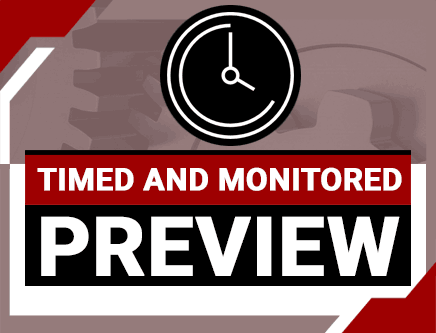ADA Paths – Part 2: Practical Design Requirements (Ohio T&M)
In ADA Paths – Part 2: Practical Design Requirements, you'll learn ...
- Accessible routes and pathways through facilities
- Specific requirements for specific spaces and equipment
- Hardware designed for use by handicapped individuals
Overview

To meet the Ohio Board's intent that online courses be "paced" by the provider, a timer will be used to record your study time. You will be unable to access the quiz until the required study time of 200 minutes has been met.
Credit: 4 PDH
Length: 58 pages
In September of 2010, the U.S. Department of Justice published the “2010 ADA Standards for Accessible Design,” a comprehensive set of standards about designing buildings to facilitate their use by the handicapped. The publication contained two parts, one establishing accessibility laws for facilities built with public funds, and one providing guidelines for public buildings built by private entities. Since that time, numerous model codes, building codes, and published standards have been released, based in part or in whole on those standards, creating some confusion as to what exactly is required. This course is a comprehensive overview of the original guidelines and their intent.
The “2010 ADA Standards for Accessible Design,” though quite lengthy, have been broken out and grouped into nine categories of information. A series introduction in Part 1 of this course series discusses the creation of the standards and their applicability as regulations. This course, Part 2, focuses on parts of the standards addressing accessible routes and pathways through facilities, specific requirements for specific spaces and equipment and hardware designed for use by handicapped individuals.
An attempt was made to simplify these regulations and present them in an orderly and comprehensible fashion. Hopefully, the resulting information will be of use in designing public accommodations and commercial facilities, making them readily accessible to, and usable by individuals with disabilities.
Specific Knowledge or Skill Obtained
This course teaches the following specific knowledge and skills:
- Turning spaces required for easy passage of those occupying mobility aids
- Requirements needed to prevent obstructions on, beside and above paths of travel, from preventing passage wheelchair users
- Signage, signal and call devices needed to facilitate use of elevators and lifts by handicapped occupants of all descriptions
- Requirements for accessibility, maneuvering and clear spaces that are particular to the use of specific spaces normally found in our buildings
- How intermediate height surfaces and fixtures, like counters, benches, lockers, mailboxes, fuel dispensers, etc., should be designed to facilitate use by the disabled
- Height limits and other dimensional data needed to ensure that, plumbing equipment normally used in toilets and bathing facilities remain usable to handicapped individuals
Certificate of Completion
You will be able to immediately print a certificate of completion after passing a multiple-choice quiz consisting of 30 questions. PDH credits are not awarded until the course is completed and quiz is passed.
| This course is applicable to professional engineers in: | ||
| Alabama (P.E.) | Alaska (P.E.) | Arkansas (P.E.) |
| Delaware (P.E.) | District of Columbia (P.E.) | Florida (P.E. Area of Practice) |
| Georgia (P.E.) | Idaho (P.E.) | Illinois (P.E.) |
| Illinois (S.E.) | Indiana (P.E.) | Iowa (P.E.) |
| Kansas (P.E.) | Kentucky (P.E.) | Louisiana (P.E.) |
| Maine (P.E.) | Maryland (P.E.) | Michigan (P.E.) |
| Minnesota (P.E.) | Mississippi (P.E.) | Missouri (P.E.) |
| Montana (P.E.) | Nebraska (P.E.) | Nevada (P.E.) |
| New Hampshire (P.E.) | New Jersey (P.E.) | New Mexico (P.E.) |
| New York (P.E.) | North Carolina (P.E.) | North Dakota (P.E.) |
| Ohio (P.E. Self-Paced) | Ohio (P.E. Timed & Monitored) | Oklahoma (P.E.) |
| Oregon (P.E.) | Pennsylvania (P.E.) | South Carolina (P.E.) |
| South Dakota (P.E.) | Tennessee (P.E.) | Texas (P.E.) |
| Utah (P.E.) | Vermont (P.E.) | Virginia (P.E.) |
| West Virginia (P.E.) | Wisconsin (P.E.) | Wyoming (P.E.) |


 Live support chat
Live support chat



